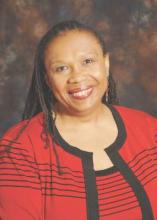For researchers, community engagement needs to start long before the recruitment begins. Authentic community-engaged research is hard and complicated – but worth it, according to Dr. Vanessa Northington Gamble, University Professor of Medical Humanities at George Washington University, Washington.
Speaking at a bioethics forum, “Research with Human Participants – the National Debates,” hosted by the University of Minnesota, Minneapolis, Dr. Gamble spoke of the classic town-gown dynamic she saw in her upbringing.
“I grew up in the shadow of an academic medical center” in West Philadelphia, said Dr. Gamble, a graduate of the University of Pennsylvania, Philadelphia. Her community, she said, didn’t have much to do with the institution that sat in its midst.
This dynamic, and the lack of engagement between the university of the day and its surrounding communities, typifies the barriers that community-engaged research seeks to overcome. Dr. Gamble spoke of community-engaged research as collaboration with groups of people affiliated by geography, proximity, special interest, or similar situations in ways that affect the well-being of these people. “We’re talking about working with and through communities, which is a very different paradigm,” she said during a live webcast of the forum Dec. 2.
The growth of community-engaged research has happened in part because of federal mandates and subsequent increased funding opportunities. However, community demands and institutional initiatives aimed at reducing inequality also have contributed to the increase in community-engaged research.
In 1997, at the meeting where he publicly apologized on behalf of the American people for the infamous Tuskegee syphilis study, President Bill Clinton directed Donna E. Shalala, then secretary of Health and Human Services and now president of the Clinton Foundation, to produce a report about how best to involve communities, and particularly those including minorities, in health care and in research. The report focused on enhancing community engagement and trust, and bringing community groups to the table from the beginning of the process, Dr. Gamble said.
Healthy People 2010 was a Clinton-era initiative that, in part, sought to eliminate racial and ethnic inequities in health care. The agenda was developed by a collaborative process, and “emphasized the role of community partnerships, particularly with nontraditional partners as effective tools for improving health in communities,” Dr. Gamble said.
In 2002, the Institute of Medicine issued a report, “Unequal Treatment: Confronting Racial and Ethnic Disparities in Health Care” that focused primarily on the African American population, and acknowledged the importance of a balanced and representative research population.
More progress was made, said Dr. Gamble, with the inception of the Patient-Centered Outcomes Research Institute (PCORI), which signaled a true commitment on the part of federal funders to transition from focusing solely on the individual to collaboration with communities.
The continuum of community engagement can range from simple outreach to true shared leadership. Dr. Gamble said she was struck by the differing levels of authenticity in engagement when she conducted site visits for a Robert Wood Johnson Foundation program some time ago. At some sites, she said, community members were brought to the table only when recruitment efforts began, and the collaboration seemed contrived for expediency.
By contrast, she recalled a conversation she had with a community leader who ran the site visit at another venue. Dr. Gamble pulled her aside and asked whether the community members were in fact leading these efforts, or whether this was just showboating. “It’s real, but it took time,” said the community leader. “It took time, and it took some people getting their feelings hurt.”
What she’s learned, Dr. Gamble said, is that doing community-engaged research “is very difficult. It’s very, very time consuming.”
True engagement begins early: “So it’s about being at the table at the beginning,” Dr. Gamble said. In 2013, the Presidential Commission for the Study of Bioethical Issues issued a report on community engagement, stressing that early engagement in the research process allows community members to articulate concerns and priorities that can shape the direction of the research.
Another factor, she said, is to define the stakeholders, and acknowledge the role a community can play in identifying unmet needs and pain points. This approach can allow the community to become teachers of the researchers, leading them to ask the questions that are really important to the community members.
“Let’s talk about trust, because it’s a critical component of community-engaged research,” Dr. Gamble said. Trust can be interpersonal, as between a physician and her patient, or social, as when an individual trusts an institution like a church or a college. These two types of trust are not mutually exclusive, Dr. Gamble said.


